The Prophet Muhammad's ﷺ Approach to Interfaith Dialogue: A Model for Contemporary Global Peace
In today’s world, the pursuit of peace remains elusive. Despite significant advancements in technology and communication, the globe is still mired in conflicts, many of which are driven by religious, ethnic, or cultural tensions. Whether it's the unending turmoil in the Middle East or the rising tensions within South Asia and Africa, these conflicts often have roots in unresolved historical disputes. At times, these issues are further complicated by external factors, such as geopolitical rivalries among nations. The rise of religious extremist groups like ISIS and Boko Haram has only added to this complexity, as they manipulate religion to justify their violent actions, further perpetuating cycles of conflict and deepening mistrust among religious communities. Such dynamics complicate, rather than resolve, the quest for global peace[1].
In this context, interfaith dialogue emerges as a vital solution. Interfaith dialogue facilitates intellectual exchanges between people of different religious traditions, fostering communication with mutual respect and understanding. It encourages a reevaluation of our attitudes towards one another and our beliefs. This is where the teachings of Prophet Muhammad ﷺ regarding interreligious relations can serve as a valuable model for peacebuilding[2].
The Prophet ﷺ lived in a world marked by religious pluralism and demonstrated justice, mercy, and balance in his interactions with Christian, Jewish, and pagan communities. He engaged deeply with their beliefs and perspectives, always aiming to act with fairness and compassion for the common good. While many religious leaders throughout history have responded to religious diversity with either hostility or indifference, the Prophet ﷺ stood apart. He exemplified an inclusive approach where respect for other faiths was inherent.
By studying the Prophet’s ﷺ methods of engaging with people of other faiths, modern societies can discover practical approaches to resolving conflicts peacefully and fostering greater harmony within the global community. This paper explores how the Prophet's ﷺ approach to interfaith dialogue can serve as a blueprint for achieving global peace today, examining the relevance and applicability of his teachings in our complex modern world.
HISTORICAL CONTEXT OF INTERFAITH RELATIONS
Pre-Islamic Arabia was home to various faiths, with no single dominant religious identity. Arabian society was predominantly polytheistic, with different tribes worshipping multiple deities[3]. Mecca, a central location for religious practices, was revered because of the Kaaba, which housed the major idols worshipped by the tribes. Despite the widespread polytheism, monotheistic influences from Judaism and Christianity were notable[4]. Jewish tribes had established themselves in Yathrib, later known as Medina, while Christian communities had settled in northern Arabia, influenced by the neighbouring Byzantine Empire. Additionally, the Hanifs, a group of monotheists, sought to emulate the Abrahamic tradition by rejecting idol worship and promoting belief in one God.
Prophet Muhammad ﷺ embodied the principles of interfaith dialogue with a strong ethical foundation rooted in values like respect for diversity, justice, and compassion for all human beings. These principles were not merely philosophical but were actively practised, setting precedents for interfaith relations in a pluralistic society. His approach was one of inclusivity and tolerance, enabling peaceful coexistence among diverse religious communities[5].
The advent of Islam brought radical changes to this religiously diverse landscape. Prophet Muhammad ﷺ emerged as a unifying figure among the tribes in this region. Almighty Allah nurtured bonds not only between Muslims but also between Muslims and Jews, Christians, and pagans, fostering interfaith dialogue. One key example of this is the Constitution of Medina, a written agreement from the early 7th century AD.
It is often hailed as the first significant agreement between Muslims and non-Muslims living together under Islamic governance. This treaty, established between Muslims, Jews, and other tribes, guaranteed equality for all and emphasised that achieving peace was a collective responsibility. The Constitution of Medina is frequently cited as an early model of Islamic interfaith dialogue and collaboration[6]. This groundbreaking document outlined the rights and responsibilities of all inhabitants, including Muslims, Jews, and other tribal groups[7]. It enshrined principles of mutual respect and justice, ensuring that each community could practice its faith freely while contributing to the collective welfare and security. This created a model of a multi-faith society under shared ethical values, establishing a foundation for peaceful co-living.
The Treaty of Hudaybiyyah also had a profound impact on interfaith relations. Though the treaty was initially meant to last only ten years, it allowed Islam to expand beyond its tribal stage. Religiously, Hudaybiyyah marked a turning point, fostering greater interaction between Muslims and non-Muslims[8] and facilitating a peaceful return to Mecca[9]. Although some Muslims resisted the idea of making peace with the Quraysh, the Prophet ﷺ demonstrated foresight and patience, recognising the long-term benefits of dialogue and negotiations. The treaty ultimately paved the way for the relatively bloodless conquest of Mecca, underscoring the Prophet’s ﷺ commitment to peace.
In addition to these diplomatic achievements, Prophet Muhammad ﷺ maintained respectful communication with leaders of other faiths. His letters to Christian monarchs, such as the Negus of Abyssinia and the Byzantine Emperor Heraclius, serve as further examples of his commitment to interfaith dialogue. These letters were polite and respectful, inviting the leaders to Islam.
One of the most remarkable examples of his tolerance and respect for other faiths occurred during his encounter with a Christian delegation from Najran. This delegation visited Medina for religious discussions, and the Prophet ﷺ not only welcomed them but also allowed them to pray in his mosque[10], demonstrating a profound level of respect and tolerance for their religious practices.
Significantly, the Prophet's ﷺ interactions with the Jewish and Christian communities in Medina demonstrated the potential for practical cooperation across religious traditions. These small communities, under Islamic governance, found themselves part of a majestic system that transcended individual theological differences while adhering to the legal frameworks drawn from their own revealed texts. Historical accounts and hadith affirm the Prophet’s ﷺ emphasis on good conduct, justice, and mutual respect, which laid the foundation for Islamic teachings on interfaith relations[11].
APPLICATION OF THE PROPHET’S ﷺ APPROACH TO CONTEMPORARY GLOBAL PEACE
The teachings of Prophet Muhammad ﷺ offer valuable insights into how we can address global conflicts today. These principles, when contrasted with other peace models, not only stand out but serve as measurable benchmarks for successful interfaith initiatives. By applying these teachings, a strong framework for promoting world peace can be established.
Addressing Contemporary Global Challenges
Many contemporary cross-border conflicts are exacerbated by religious dimensions, often intertwined with longstanding political, ethnic, or social tensions, escalating them into full-blown violence. These conflicts are deeply embedded in a complex web of historical animosities, cultural distinctions, and external interference, making them difficult to resolve. However, a nuanced approach inspired by the Prophet Muhammad ﷺ, who emphasized justice while upholding the dignity of his own religion, can offer solutions.
One of the most corrosive modern conflicts is the ongoing violence rooted in tensions between Sunni and Shia Muslims, as seen in Syria, Iraq, and Yemen[12]. While these wars are not strictly religious, they are complicated by political power struggles and economic disparities, with foreign interference further fueling the conflict. The example of the Prophet ﷺ, particularly his establishment of justice and fair representation through the Constitution of Medina, holds significant relevance in this context[13]. He created a system in which various tribes and religious communities had equal rights—an age-old template that remains applicable today.
Governments in conflict zones could adopt political initiatives to address marginalization, which often drives individuals toward extremist ideologies. At the same time, they should ensure fair political representation and equitable resource distribution among different sectarian groups. The Prophet’s ﷺ trade policies and his treaty with the Quraysh demonstrate that negotiations often yield better results than force. International mediators could adopt a similar approach, fostering open communication between conflicting parties. This would facilitate the emergence of mutually acceptable solutions and contribute to lasting peace in regions plagued by sectarian violence[14].
The Rohingya crisis, involving the persecution of a Muslim minority in Myanmar, stands as one of the most pressing humanitarian issues today. Rooted in ethnic nationalism and religious intolerance, the crisis has resulted in violence, displacement, and the denial of citizenship, endangering countless lives. Prophet Muhammad ﷺ—himself a member of an oppressed minority in Mecca and later a sovereign leader—set a powerful example by protecting minority rights, even when he held the power to do otherwise. For instance, he signed covenants with Jewish tribes in Medina, ensuring their rights and safety. In today's context, international bodies and governments must enact laws that protect the rights of oppressed minorities. Organizations like Amnesty International and Human Rights Watch could draw from these principles, focusing not just on world opinion but on concrete actions that bring international justice and protection to the Rohingya people.
Another significant challenge is Islamophobia, which stems from racism and manifests in prejudice, discrimination, and hatred against Muslims. In Western societies, social cohesiveness and mutual understanding have often been effective in confronting this issue[15]. Prophet Muhammad ﷺ emphasised the importance of knowledge to combat ignorance and prejudice, a teaching that remains relevant today. Educational programs that highlight shared values across faiths can play a crucial role in reducing Islamophobia. Schools and universities should adopt interfaith curricula that showcase Islam’s contributions to global civilisation.
Moreover, creating collaborative projects and dialogues that connect Muslim communities with non-Muslim counterparts can echo the Prophet's ﷺ work in Medina. Initiatives such as interfaith community centers and joint social service projects can bring the stories of diversity to life, fostering action that dispels stereotypes and builds solidarity. Through these efforts, we can work towards mutual respect and understanding, just as the Prophet ﷺ did in his time.
After the Bosnian War (1992-95), severe ethnic and religious tensions persisted among the three main communal groups: Bosniaks, Serbs, and Croats. Efforts to rebuild peace and coexistence were centred on initiatives that promoted interfaith harmony. Drawing inspiration from the principles of inclusivity and respect exemplified by Prophet Muhammad ﷺ, organisations like the Interreligious Forum for Peace and Reconciliation in Bosnia-Herzegovina launched various programs to bridge divides and foster mutual understanding between different faith communities.
One such initiative was the Mytilini Reform Program, which created dialogue hubs for Muslim, Orthodox Christian, and Catholic leaders to air grievances, discuss differing perspectives, and build trust[16]. These efforts were grounded in the tradition of dialogue inspired by the Prophet’s ﷺ engagement with other religious communities to find common ground. Educational workshops on the history and contributions of faith-based communities were also organised, helping to foster a sense of shared heritage and collective identity, while erasing misconceptions and encouraging cooperation around common goals.
These initiatives represent the model of sabr (patience) and muwāṭaanah (citizenship) set by our beloved Prophet ﷺ, proving to be far more effective than slogans or hashtags. They have played a key role not only in moving communities forward but also in beginning the process of healing and reconciliation[17].
Comparison with Other Peace Models
Prophet Muhammad’s ﷺ approach to peace stands out for its comprehensive acceptance of differences, distinguishing it from both historical and contemporary peace models. Take, for example, the Treaty of Westphalia (1648), which established principles governing national sovereignty and non-intervention in Europe’s religious conflicts[18]. While it was a significant step in ending hostilities, it did not adequately address the deeper aspects of interfaith relations or mutual respect for different religions. The Westphalian model focused on maintaining harmony between states, with little attention to the religious communities within those states.
Similarly, contemporary secularism seeks to separate religion from state affairs, ensuring neutrality on religious issues. While secularism may offer equal space and respect for all religions, it often falls short of actively promoting interfaith dialogue. This can be contrasted with the numerous Quranic narratives and the Prophet’s ﷺ engagements, which demonstrate the importance of interaction between different faith communities. Secularism, while effective in reducing the role of religion in public life, tends to downplay the positive influence that religious values and principles can have on peacebuilding and social cohesion[19].
By contrast, Prophet Muhammad ﷺ offers a model that merges religious reverence with political and social harmony. The Constitution of Medina, for example, laid the groundwork for a multi-religious society, allowing each community to live peacefully without losing its distinct identity. This approach presents something that contemporary peacemaking practices could greatly benefit from addressing religious and political/social dimensions together. The Prophet’s ﷺ method did not compartmentalise religion as something separate from political and social interaction, as seen in secularism or much of Western thought, but rather integrated them to foster a cohesive and harmonious society.
ABOUT THE AUTHOR
Sirajuddin Shaikh is a PG research scholar of the Department of Study of Religion at Darul Huda Islamic University, Kerala, India. His research areas include Islamic Studies, Study of human behavior, and Islamic psychology
Reference
[1] Ibrahim, I. & Othman, Mohd & Dakir, Jawiah & Samian, Abdul & Hasim, M.S. & Stapa, Z. & Awal, N.A.M. & Awang, Jaffary & Ismail, Ahmad Munawar & Idris, Muhamad Razak & Yahya, Shamsul & Ibrahim, S.M.I. & Zain, Amy & Ramli, Ahmad. (2012). The importance, ethics and issues on interfaith dialogue among multi racial community. Journal of Applied Sciences Research, 8(6), 2920-2924, https://www.researchgate.net/publication/291873536
[2] Karim, Khairulnizam & Saili, Suzy. (2009). Inter-faith Dialogue: The Quranic and Prophetic Perspective. Journal of Usuluddin. Vol 29. 65-93. https://www.researchgate.net/publication/255977296
[3] The Quraysh tribe, which dominated Mecca, worshipped Hubal, a deity associated with the moon, and other gods like Lāt, ʻUzzā, and Manāt, who were linked to fertility and natural forces.
[4] Jewish tribes such as the Banu Qaynuqa and Banu Nadir, settled in the Arabian Peninsula, had interactions with their polytheistic neighbors, which influenced local religious practices. Christian influence also came from the Byzantine Empire and the presence of Christian tribes such as the Ghassanids, who played a role in the region.
[5] Golestani, T. A. (2019, November 25). Prophet Muhammad’s Model of Interreligious Dialogue Based on Research on the Letter to the Christians. Unity and Dialogue, 74(2), 109–124. https://doi.org/10.34291/Edinost/74/02/Amini
[6] Khan, I., Elius, M., Mohd Nor, M. R., Yakub zulkifli Bin Mohd yusoff, M., Noordin, K., & Mansor, F. (2020). A Critical Appraisal of Interreligious Dialogue in Islam. Sage Open, 10(4). https://doi.org/10.1177/2158244020970560
[7] Wildan, T. (2023). Principles of the teaching of nation and state life in the Constitution of Medina. Ibda': Jurnal Kajian Islam dan Budaya, 21(1), 17-36. https://doi.org/ 10.24090/ibda.v21i1.6747
[8] Elsayed, K. A., & Yusoff, K. (2012). The Implication of Peace Treaties in Disseminating Da’wah Islamiyah (the Islamic call) among Non-Muslims: A Special Reference to Hudaibiya Treaty. Australian Journal of Basic and Applied Sciences, 6(7), 204-212. https://www.ajbasweb.com/old/ajbas/2012/July/204-212.pdf
[9] Bsoul, Labeeb. (2017). The impact of Hudaybiya on contemporary treaties: Between memory and desire. Journal of Humanities and Cultural Studies R&D,. 2. 1-33. https://www.researchgate.net/publication/319903714
[10] Ṣaḥīḥ Bukhārī: 59: 663, Ṣaḥīḥ Muslīm: 31: 5949
[11] Elius, Mohammad & Khan, Issa & Mohd Nor, Mohd Roslan. (2019). Interreligious Dialogue: An Islamic Approach. Journal of Katha. 15. 1-19. 10.22452/KATHA.vol15no1.1
[12] Hotez P. J. (2018). Modern Sunni-Shia conflicts and their neglected tropical diseases. PLoS neglected tropical diseases, 12(2), e0006008. https://doi.org/10.1371/journal.pntd.0006008
[13] Ishak, B. B., & Aziz, S. B. A. (2022). The Madinah Charter In Light of A Modern Constitution. IIUMLJ, 30(1), 195-220. https://journals.iium.edu.my/iiumlj/index.php/iiumlj/article/download/713/351/2723
[14] İskenderoğlu, M. (2024). Interreligious dialogue models from the life of the Prophet Muhammad: By Alwani Ghazali and Muhammad Kamal. Routledge. https://doi.org/10.1080/09596410.2024.2353514
[15] Kozaric, E. (2023). Are Muslim experiences taken seriously in theories of Islamophobia? A literature review of Muslim experiences with social exclusion in the West. Ethnic and Racial Studies, 47(5), 907–940. https://doi.org/10.1080/01419870.2023.2268179
[16] Preljevic, H. (2017, Summer). The Role of the Islamic Community in Peacebuilding in Post-War Bosnia and Herzegovina: Case Study of East Bosnia. Insight Turkey, 19(3), 207-230. 10.25253/99.2017193.12
[17] Ghazali, Alwani & Ahmad, Nadzrah & Mohd Khambali @ Hambali, Khadijah & Meftah, Jilani & Zumrah, Abdul & Ibrahim, Zamrie. (2019). Characteristics of the Prophetic Interfaith Dialogue: Foundation for Contemporary Interfaith Dialogue Enterprise. Jurnal Akidah & Pemikiran Islam. 21. 75-102. 10.22452/afkar.vol21no2.3
[18] Bakir, A. (2022). Islam and International Relations (IR): why is there no Islamic IR theory? Third World Quarterly, 44(1), 22–38. https://doi.org/10.1080/01436597.2022.2121695
[19] Doering, J., & Peker, E. (2022). How Muslims respond to secularist restrictions: reactive ethnicity, adjustment, and acceptance. Ethnic and Racial Studies, 45(15), 2956–2977. https://doi.org/10.1080/01419870.2022.2052143
Disclaimer
The views expressed in this article are the author’s own and do not necessarily mirror Islamonweb’s editorial stance.



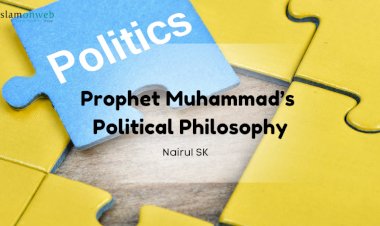
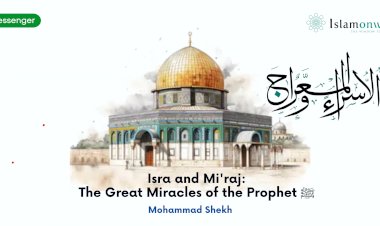
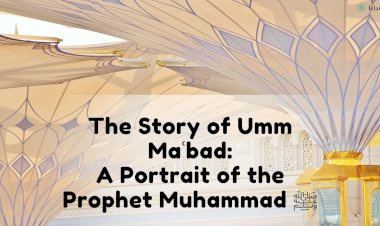
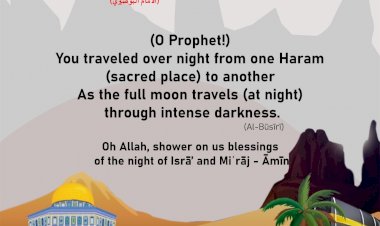
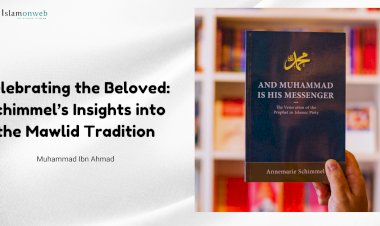















Leave A Comment